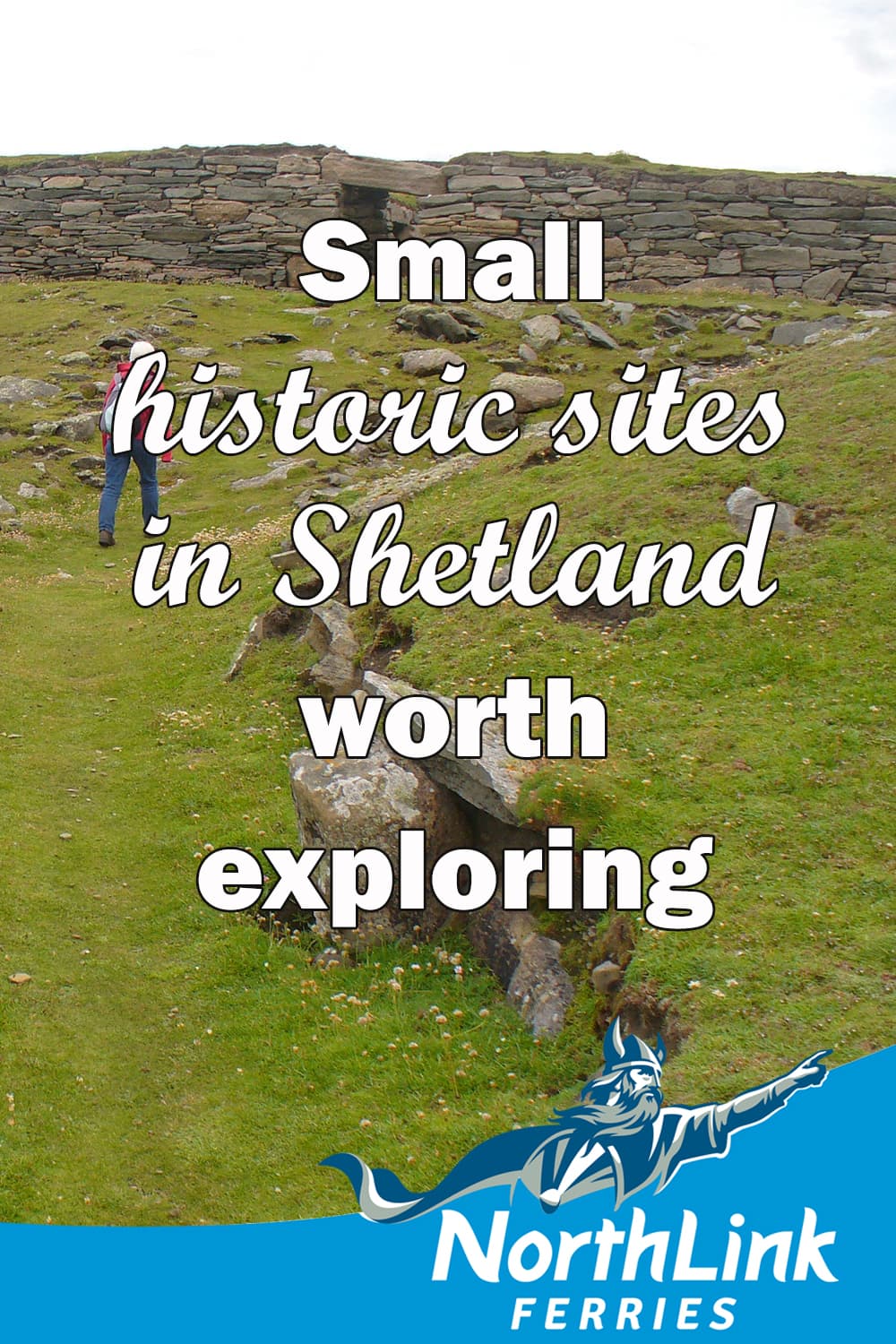Small Shetland historic sites worth visiting
Shetland has a rich cultural history, one that is dominated by stories of Vikings and Picts, Neolithic farmers and Scottish earls. These past people left their mark on the landscape, etching their lives into the archaeological and built landscapes of the isles.
Lund standing stone, found on the northernmost isle of Unst, is Shetland’s largest and most impressive standing stone yet is relatively unknown to most!
As well as the big hitter, must-see sites, like Jarlshof and Mousa Broch, there are a number of smaller sites, tucked away into the fabric of island landscapes that are no less compelling, and utterly incredible to discover.
Here are our pick of Shetland’s smaller historic sites to visit:
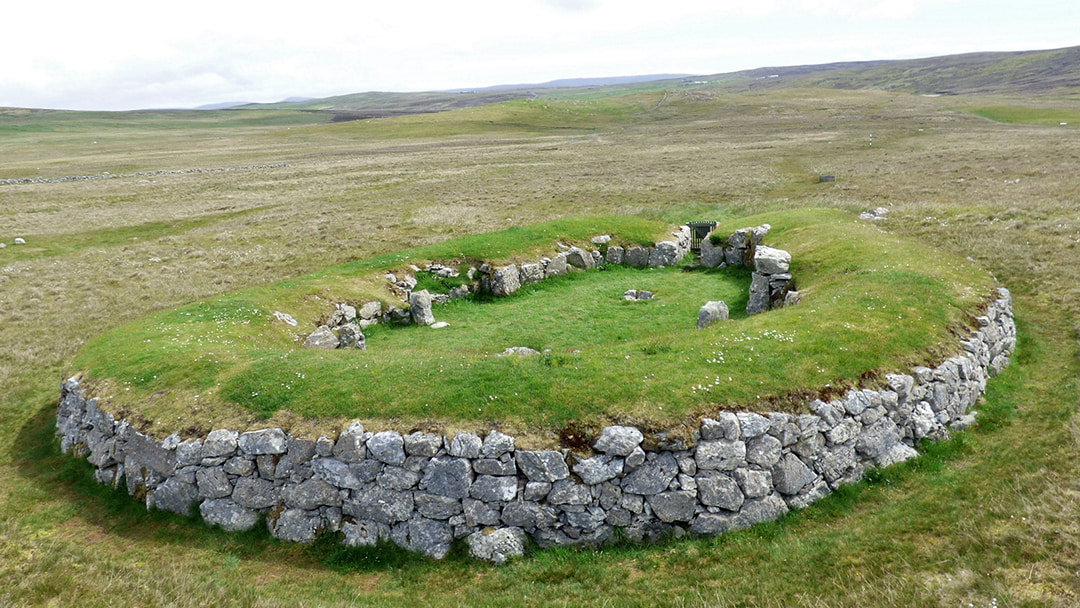
Stanydale Temple, West Mainland
Stanydale Temple sits in the heart of Shetland’s beautiful West Mainland, where a short walk takes visitors into the heart of Neolithic Shetland and back in time, some 4,000 years. This incredible heel-shaped megalithic structure – the only one in Shetland – remains shrouded in mystery and intrigue and is, unusually, located out of view of the sea.
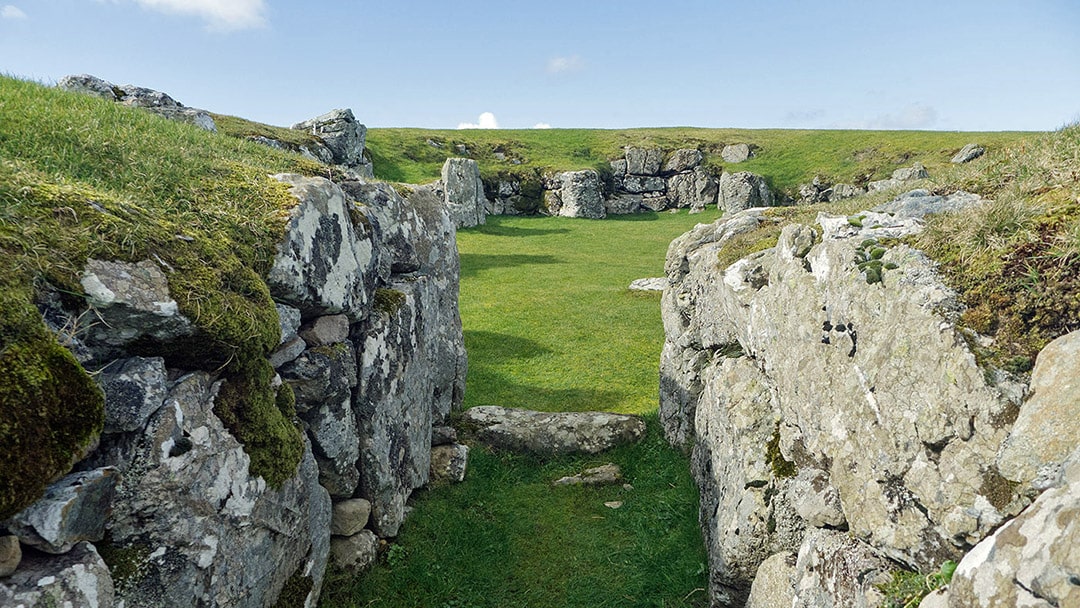
Archaeologists are still trying to figure out the meaning of this structure, though its size indicates it may have had a communal purpose, and it has been compared to Mediterranean temples. The façade is similar to others in Shetland – Islesburgh and Punds Water (Northmavine) (see below) – but the large size is unlike anything else locally.
The beauty of the mystery is that its true purpose belongs to the imaginations of those who take the time to visit. This site is unassuming and understated, with a single parking place, and without a visitor centre, waymarkers lead visitors into the hill where the temple sits tucked into the sweeping landscape, out of view of the road.
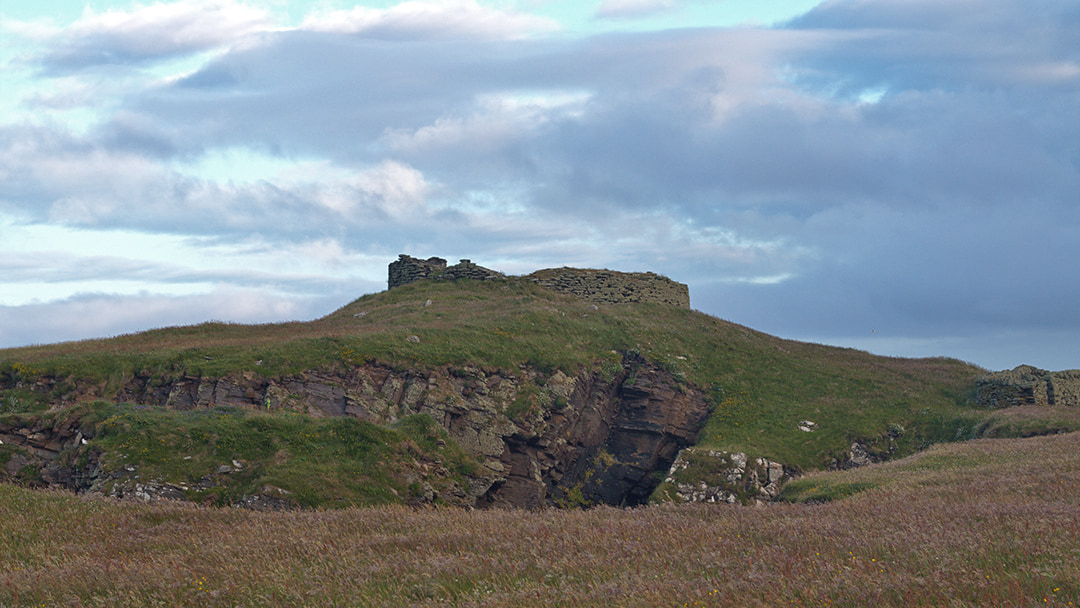
Burland Broch, South Mainland
Burland broch is an impressive Iron Age broch, dating back some 2,000 years, and sits opposite Mousa Broch on the Mainland side of the Mousa Sound. The broch today stands at only a few metres in height, but commands impressive views over to its “sister”, the Mousa Broch. It’s thought that this now ruinous broch may have stood at the same height as the Mousa Broch, and it shares the same footprint as its neighbour.
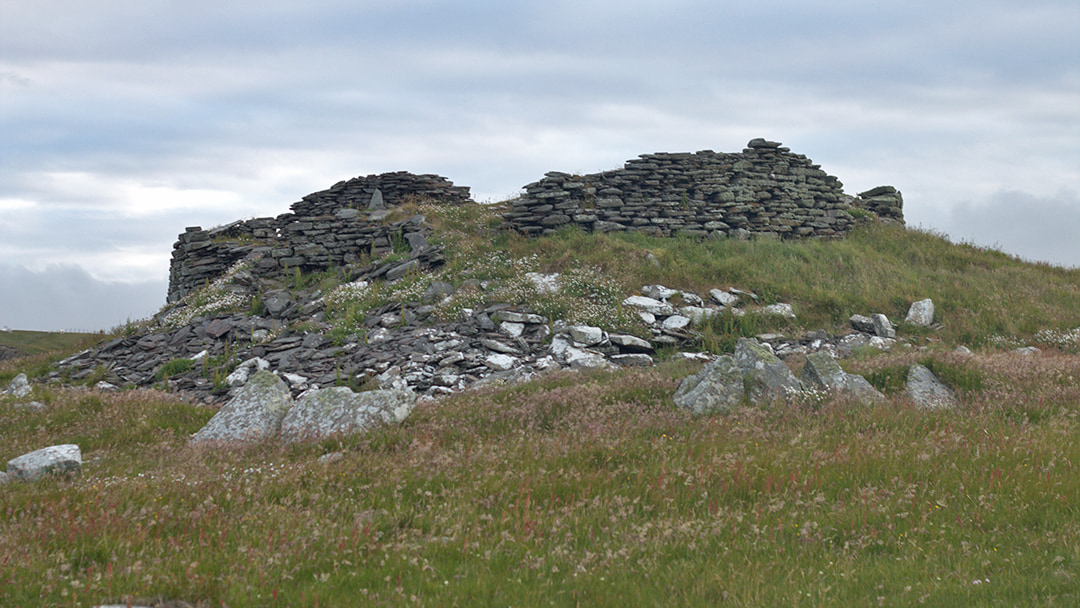
Whatever it may have looked like, or how tall it may have stood, these two brochs would have been an imposing sight to anyone approaching the channel from the south. This is a beautiful walk along a farm track before making the final stretch out to the broch, passing the old Burland township along the way.
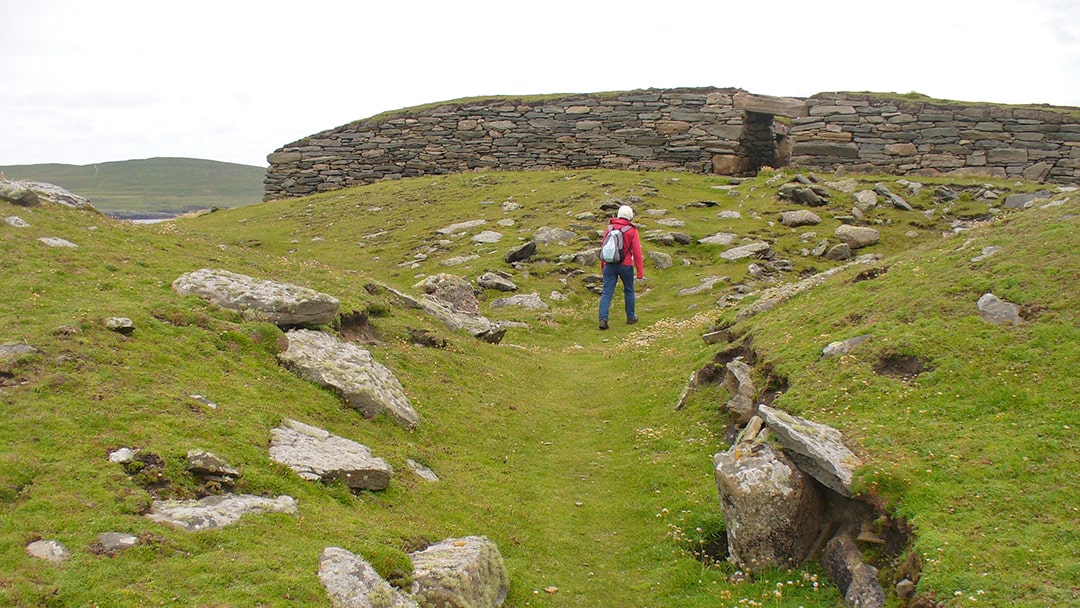
Ness of Burgi, South Mainland
The Ness of Burgi is the neighbouring headland to Sumburgh Head, in Shetland’s South Mainland, and is home to an impressive Iron Age block fort. The Ness of Burgi is one of at least three Iron Age block forts known to have been in Shetland. Other examples are found at Clickimin Broch and in Whalsay. Ness of Burgi is about 2,000 years old and contemporary with the brochs.
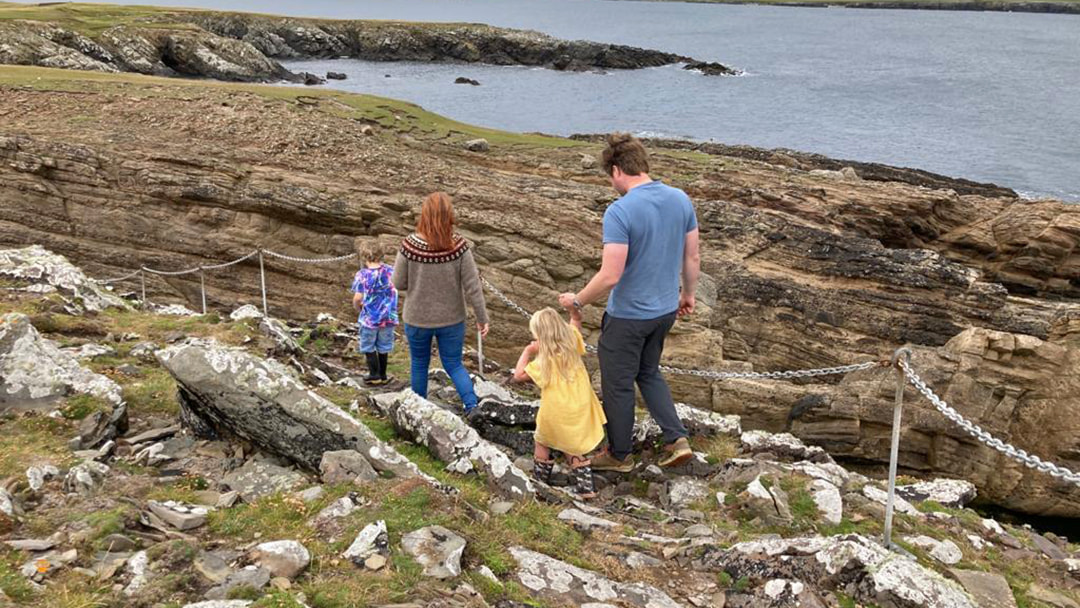
The fort is about 23 by 5.5m (75 by 18ft), with walls that stand about 1.5m (5ft) high today. The fort has a central passage and two large chambers to the north and south. The walk there and back is about 2 miles (3.25 km) and will take an hour. This is a beautiful coastal walk, particularly in early summer when the thrift, or sea pinks, are in bloom.
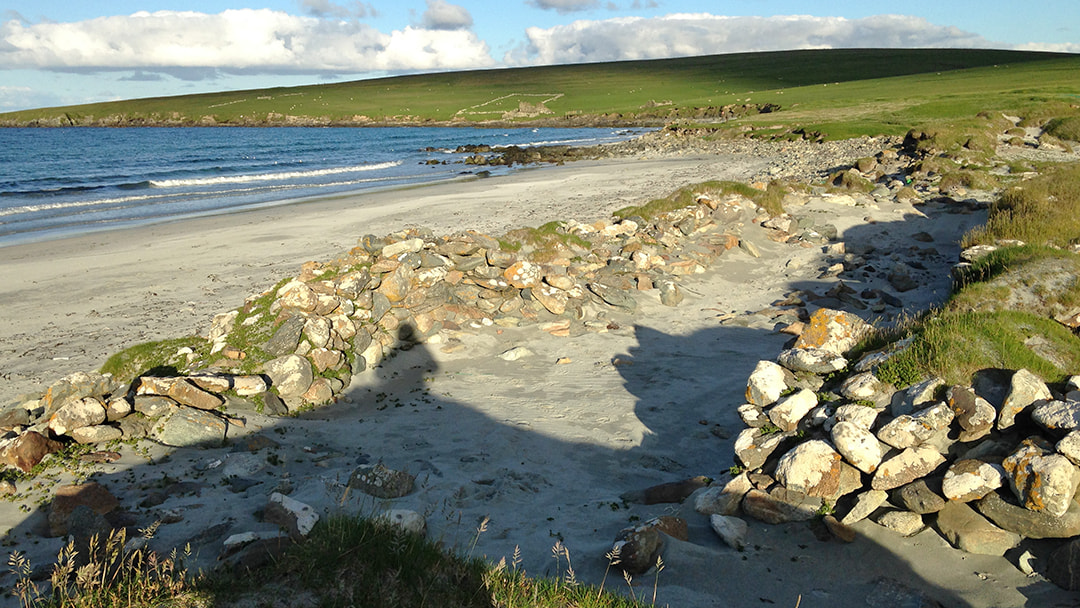
Sandwick longhouse (Eastings Beach), Unst
Two miles along the road from Uyeasound (towards Muness) is Sand Wick, a bay with a beautiful beach known as the Eastings. At the head of the bay, on the central edge of the beach, lie the excavated remains of a Norse longhouse. The evidence of past people here is striking; archaeologists discovered two Pictish burials in this area and the remains of an Iron Age house. Several interpretation boards helpfully depict the archaeology.
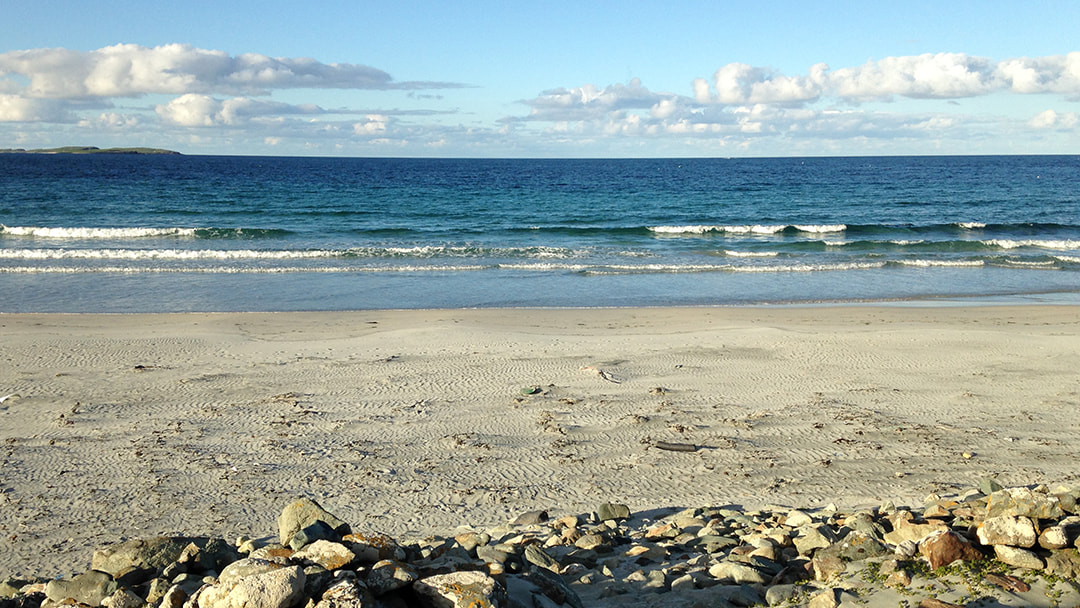
The Eastings is a brilliant beach for children as it’s long, sandy and allows plenty of space to play – so remember to bring a bucket and spade!
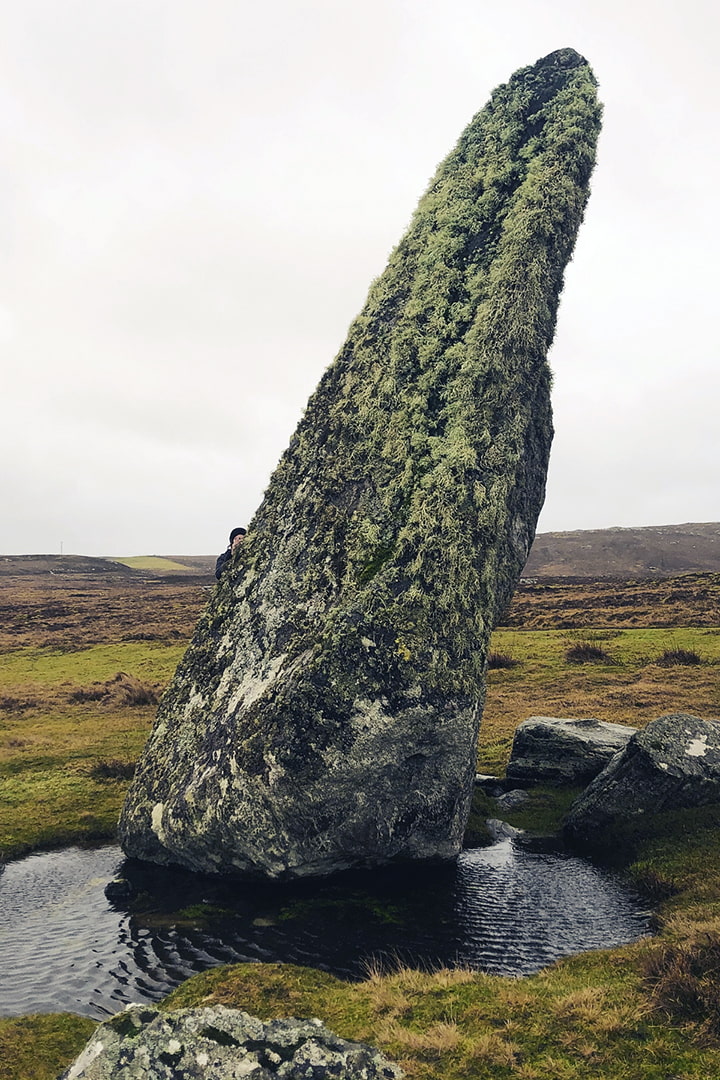
Lund Standing Stone, Unst
At Lund in Unst, standing proud at the roadside and impossible to miss, is the 12-metre-high Lund Standing Stone (sometimes known as the Bordastubble Stone), a giant monolith dating to the Neolithic or Bronze Age. This is Shetland’s largest and most impressive standing stone.
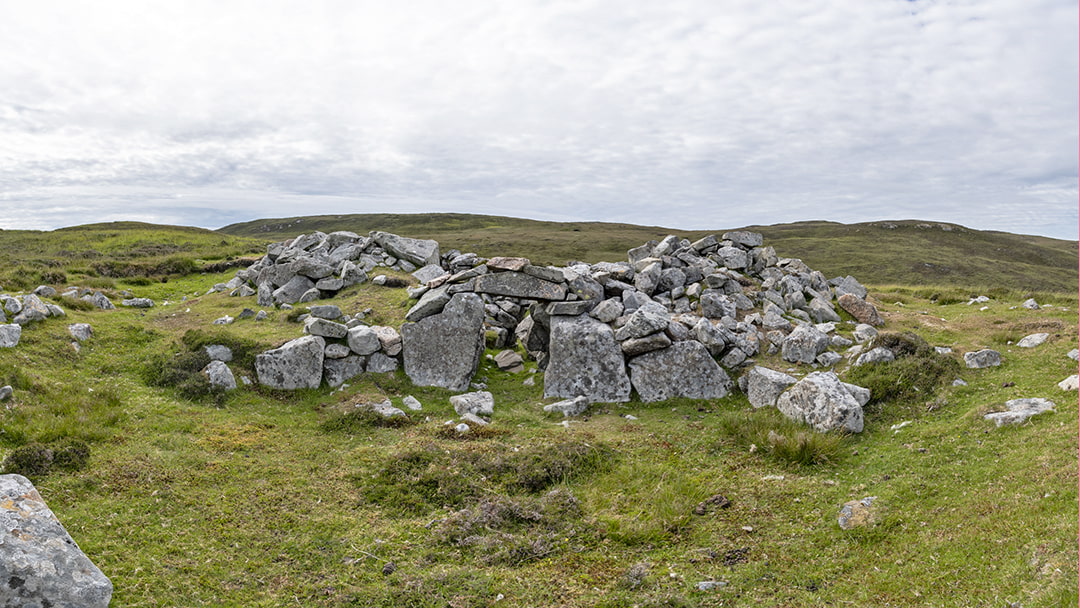
Pundswater chambered cairn, North Mainland
Pundswater is found just north of Mavis Grind in Shetland’s North Mainland. A short hike over the hill takes you to an area out of sight of any other houses, roads or modern structures to a quiet dip in the hill where Pundswater chambered cairn and homestead are found.
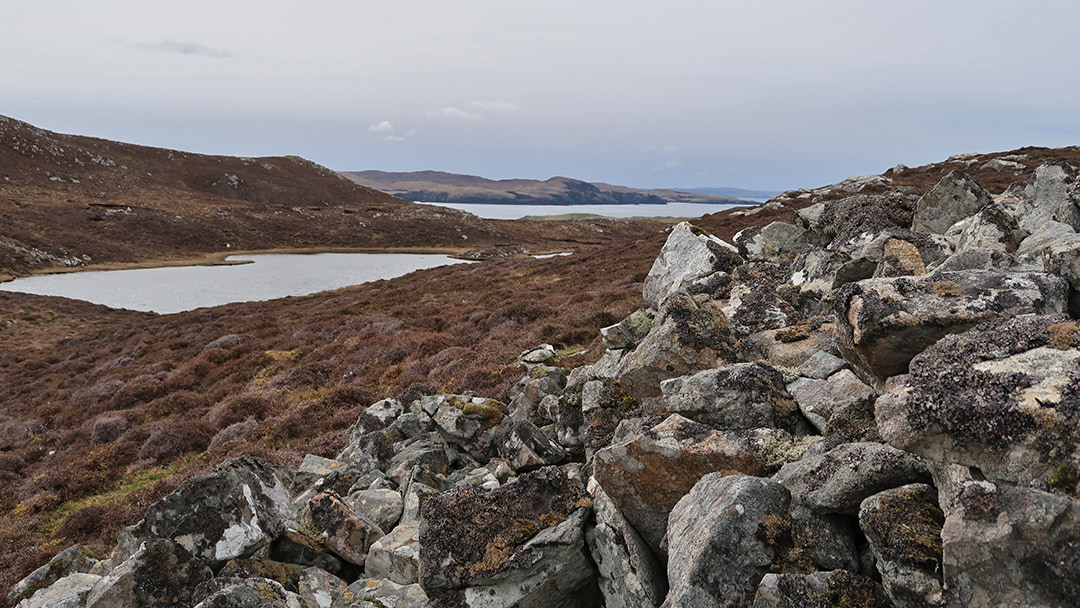
These sites, without interpretation, date back to Neolithic Shetland to a time when the islands were scattered with small farms. The chambered cairn, where the bones of the dead would have been laid to rest, is in very good condition and represents ancient burial practices in the islands.
Nearby, a sizeable house enjoys beautiful views across the moorland and over the quiet loch – the perfect spot for a picnic and some quiet contemplation about the people who lived here many thousands of years ago.
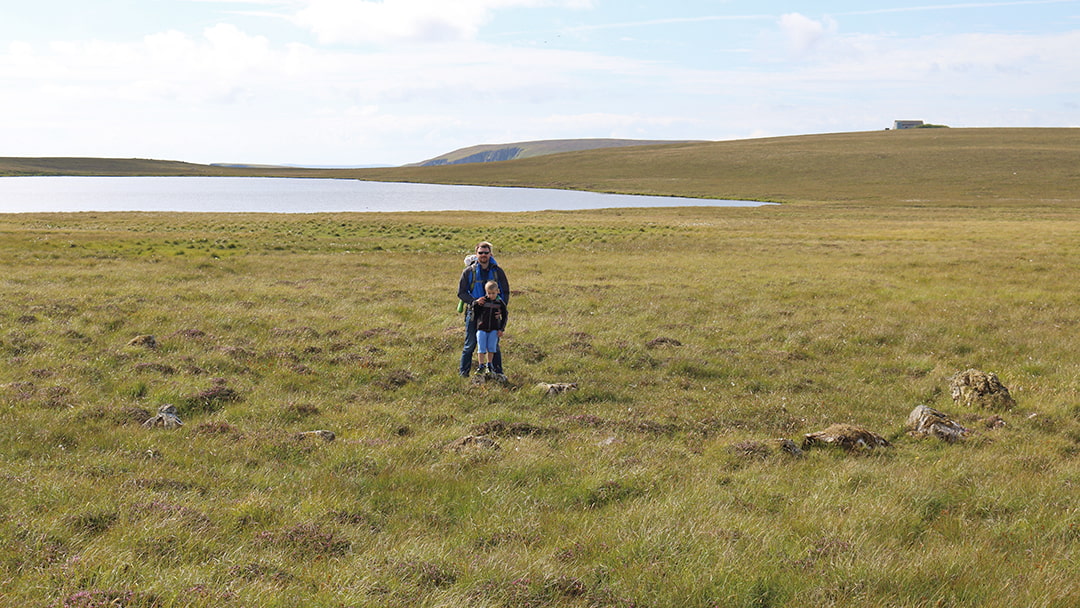
Haltadans stone circle, Fetlar
Haltadans Stone Circle is a small stone circle on the island of Fetlar, believed to date to the Bronze Age. This 38-stone circle features two upright monoliths positioned in the ring’s centre, and has several folklore tales associated with it.
One goes that the two central stones represent a fiddler and his wife, and those surrounding are trows (trolls) who, while dancing to the fiddler’s tunes, were literally petrified by the rising sun.
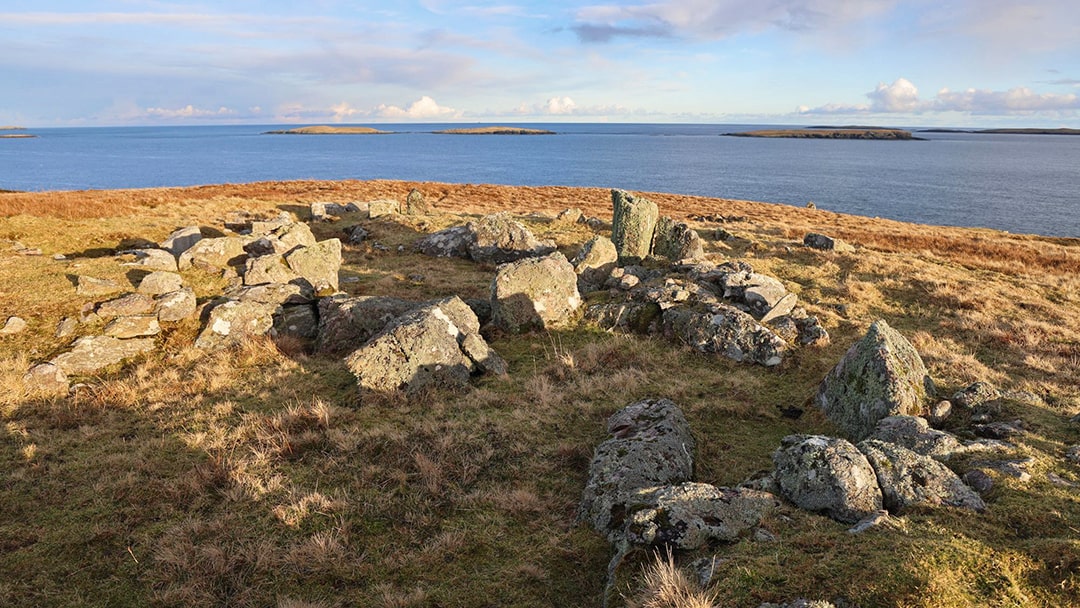
The Beenie Hoose, Whalsay
Parking at the former Whalsay airstrip and walking south along the east coast, you’ll discover some fascinating archaeological remains, including Neolithic houses, standing stones and a chambered cairn. Whalsay has been inhabited since Neolithic times, with evidence of early farmers at Yoxie and the nearby Beenie Hoose at Pettigarth’s Field.
Further signs of Whalsay’s prehistoric past can be seen east of Symbister on the Loch of Huxter, where the remains of an Iron Age block fort (see Ness of Burgi above), dating back some 2,000 years, still stand on an island within the loch.
 By Laurie Goodlad
By Laurie GoodladBorn and raised in Shetland, Laurie loves the unique history and culture there so much that she started her own tour company offering visitors the chance to see the isles through the eyes of an islander. Find out more at www.shetlandwithlaurie.com
Pin it!